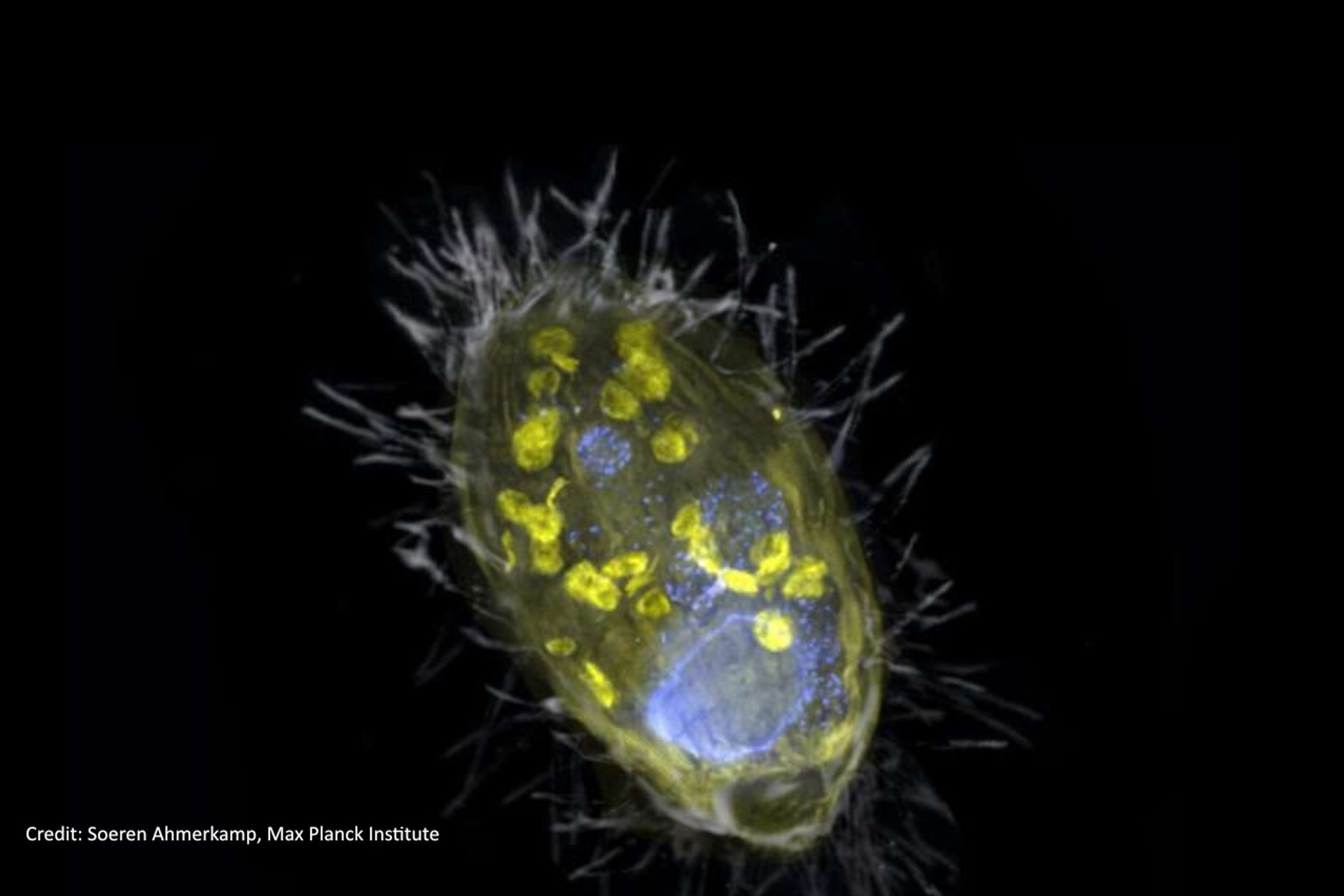Scientists discover more mitochondria-like symbionts with surprising metabolic capacities

In 2021, scientists at the Max Planck Institute for Marine Microbiology discovered a new form of symbiosis, where a unique bacterium lives inside a ciliate (a unicellular organism) and provides it with energy. Unlike mitochondria, the bacterium derives energy from nitrate respiration instead of oxygen. Following this discovery in a freshwater lake, researchers, led by Jana Milucka, began investigating how widespread and diverse these symbionts are in nature, and whether they are rare or have simply gone undetected until now. They aim to explore their presence and metabolic abilities across various environments.
Scientists searched large public sequencing databases for molecular signatures of the newly discovered symbiont and found it in about 1,000 datasets from various environmental samples. They were surprised by how widespread these symbionts are, finding them on every inhabited continent and in diverse habitats, including lakes, groundwater, and wastewater. In addition to the original symbiont, they discovered close relatives, identifying four new species. Two of these species formed a new genus, which they named Azosocius (meaning "nitrogen associate"), reflecting its similar role to the original symbiont, Azoamicus ("nitrogen friend").
One of the new Azosocius species was found near Bremen, Germany, in a groundwater sample from Hainich. The scientists, in collaboration with Kirsten Küsel and Will Overholt from Friedrich Schiller University, accessed the site and examined metatranscriptomic data to study gene expression and microbial activity. They were surprised to discover that, unlike the original symbiont species, which can only perform anaerobic respiration, the new species can also respire oxygen, thanks to encoding a terminal oxidase enzyme. This ability to respire both oxygen and nitrogen explains why these symbionts are found in environments that are fully or partially toxic.
The discovery of new Azosocius species, published in Nature Communications, helps answer the scientists' questions about the symbiont's biogeography and opens new avenues for studying its evolution. These findings shed light on how beneficial symbioses begin and evolve over time. The research also has ecological implications, as the symbiosis plays a role in the nitrogen cycle by performing denitrification, potentially removing nitrogen oxides and producing greenhouse gases like nitrous oxide. Milucka expressed fascination with the metabolic innovations in protists, which often form symbiotic relationships with prokaryotes, and sees these organisms as crucial to understanding the evolution of eukaryotes. To learn more, head to Fanni Aspetsberger’s article in Max Planck Society https://phys.org/news/2024-12-scientists-mitochondria-symbionts-metabolic-capacities.html